Proving Their Loyalty After Japan’s Attack on Pearl Harbor, Oahu
Nisei soldiers fought bravely on the European battlefields and provided a strategic advantage in the Pacific.
100th/442nd RCT in formation after rescue of the “Lost Battalion” (1944). (Photo: U.S. Army)
On December 7, 1941, Japanese Naval planes attacked Pearl Harbor bringing about the U.S. involvement in WWII. The attack shocked the world and cast Hawaii’s Nikkei under a cloud of suspicion. Martial law was declared in the Territory of Hawaii.
Fueled by racism, a lack of leadership, and unfounded fears of an invasion of the U.S. West Coast, President Franklin D. Roosevelt signed Executive Order 9066 on February 19, 1942, which led to the relocation and internment of about 120,000 persons of Japanese ancestry living on the West Coast.
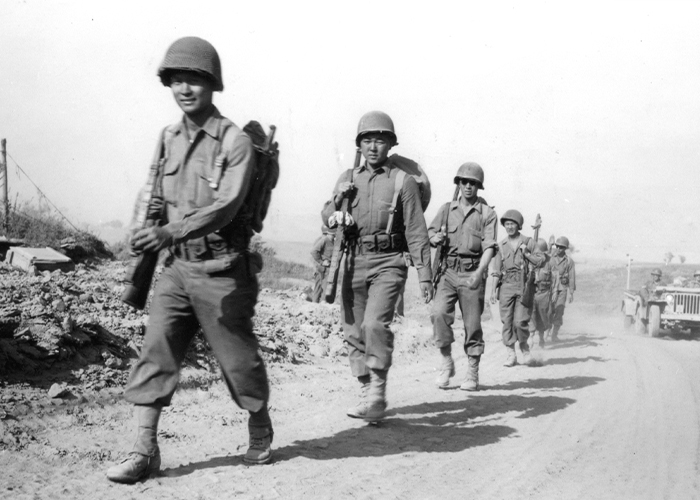
100th Infantry Battalion Nisei soldiers in Italy (1944). (Photo: U.S. Army)
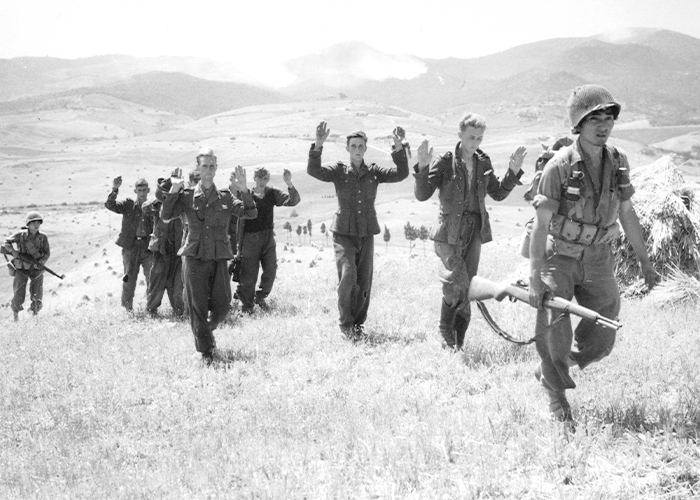
442nd RCT Nisei bring back German prisoners, Italy (1944). (Photo: U.S. Army)
However, here in Hawaii, Americans of Japanese ancestry (AJA) were not subjected to large-scale incarceration due to logistical and economic concerns and the heroic efforts by many non-AJAs. About 2,000 Nikkei in Hawaii were eventually interned because they were deemed a threat to the United States. Incredibly, many other AJAs offered to serve their country, eager to prove their loyalty as American citizens. Ultimately, more than 20,000 Nisei served honorably in these four U.S. Army units, three of which were racially segregated:
- 100th Infantry Battalion, known as the “Purple Heart Battalion” due to the high number of casualties it sustained, originated in Hawaii, and preceded the 442nd RCT in training and battle. It was later incorporated into the 442nd RCT in June 1944 when the 442nd RCT arrived in Europe.
- 442nd Regimental Combat Team, known for its battle cry of “Go For Broke,” was formed in February 1943 and together with the 100th Infantry Battalion, remains the most decorated unit in U.S. military history for its size and period of combat during WWII. About two-thirds of its initial 4,500 volunteers were from Hawaii.
- Military Intelligence Service (MIS) consisted of intelligence specialists, linguists and infantrymen who served in the war in the Pacific performing vital translation, interpretation and later government liaison assignments.
- 1399 Engineer Construction Battalion was activated in Hawaii and completed major defense construction projects on Oahu.
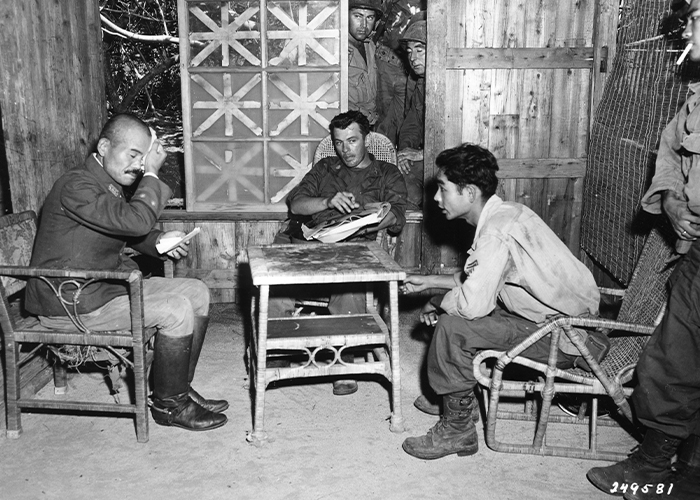
MIS Nisei Jiro Arakaki (right) from Hawaii questions Japanese Army officer (October, 1945). (Photo: U.S. Army)
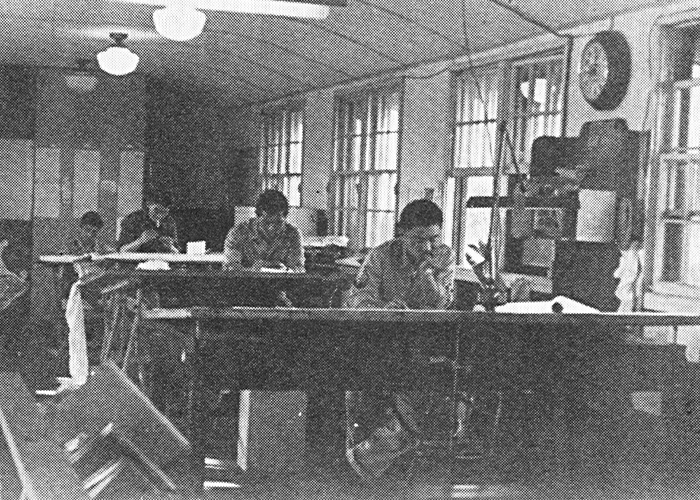
1399 Engineer Construction Battalion S-3, Engineering Section (Photo: U.S. Army Signal Corps)
Nisei women served in the Army Nurse Corps and Women’s Army Corps, some with the MIS as translators.
These Nisei soldiers — men and women — served their country with honor, duty, loyalty and perseverance — values instilled in them by their Issei parents.
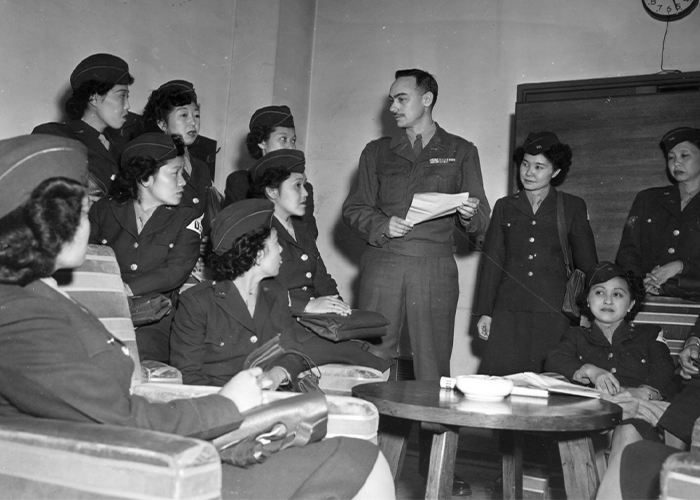
Nisei members of the Women’s Army Corps, Tokyo, Japan (1946). (Photo: U.S Army)